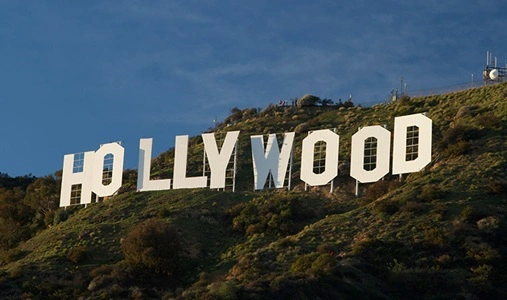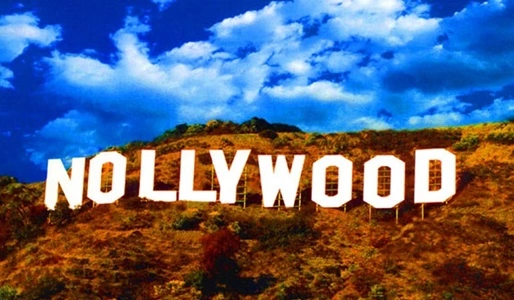From the sparkling glamour of Hollywood to the bright and colorful stories of Bollywood, the new celebrities from Nollywood in Nigeria to gripping dramas coming from South Korea—these top 10 industries are surely the stage of human emotions and their creative flares. They are not just entertainers but ambassadors of culture, uniting us with their laughter, tears, and dreams that have managed to penetrate linguistic and frontier barriers. In this article, we take you through the stories churned by the giants of world cinema, and a legacy they leave behind. Now, let’s go down into the world of films, where in every scene there is a story of its own.
1. Hollywood, USA
Hollywood, in Los Angeles, California, is not so much a place but an idea symbolic of the American film industry and through that, world cinema. Hollywood was founded in the beginning of the 20th century; the first film studio in town was the Nestor Film Company, created in 1911. It is important to notice the fact that the very first big hit film ever made in Hollywood was a film called “The Squaw Man,” made by a duo of Cecil B. DeMille and Oscar Apfel in the year of 1914. Most importantly, Hollywood, being best known for its great blockbuster movies with technological innovation and splendid Oscars, this industry has given highly iconic movies like “Star Wars,” “Titanic,” and “Avatar,” which have highly dominated with filmmaking special effects.
2. Bollywood, India
Bollywood, the heart of the Indian film industry based in Mumbai, is known for its vibrant musical dramas that integrate song, dance, emotion, and colorful storytelling. The industry’s name, Bollywood, is a portmanteau of Bombay (the former name of Mumbai) and Hollywood. It officially began with the release of “Raja Harishchandra” in 1913, directed by Dadasaheb Phalke, which is recognized as India’s first full-length feature film. Bollywood produces over a thousand films annually, catering to a global audience with its unique blend of entertainment. The industry is celebrated for its high-volume production, with films that often feature elaborate dance sequences and dramatic narratives.
3. Nollywood, Nigeria
Nollywood is a common name for the Nigerian film industry. By film output, it is the largest in Africa. The naming is a fusion of Nigeria and Hollywood. The growth of Nollywood dates back to the early 1990s with the release of “Living in Bondage,” a 1992 film directed by Chris Obi Rapu, which is often, in quotes, considered the first blockbuster in the industry and set a very high pace for future productions. Nollywood movies visually narrate stories about family, love, and corruption—everything and anything an African across the entire land can find relatable.
4. Cinema of China
Over time, the Chinese film industry grew in prominence and its development accelerated. “The Battle of Dingjunshan” (1905) was a recording of a stage performance; However, it presented the first Chinese film. Today, China is one of the largest domestic film markets in terms of film box office volume and revenue contribution. Several factors have been identified that strengthen the identity of this industry, the industry is recognized for its rapid expansion, government support, and international co-productions, contributing to its global influence.
5. United Kingdom
The United Kingdom has a very great history in the film industry, having contributed to the world some of the best franchises, including James Bond. The history of film from UK films finds its roots back in the 1890s with William Friese-Greene’s patent for a motion picture camera. The industry has been characterized by its historical epics, international co-productions, and a strong tradition of storytelling. The key film production and financing center is London, with the country remaining at the top in its dominance on the international cinema stage.
6. Cinema of South Korea
World cinema surely has an indelible imprint by the South Korean film industry, which masterpieces on genre-blending and innovative storytelling bring to the screens. Though its rise dates back to modern times, the 1950s, it truly has gathered international attention in the 21st century, like the Academy Award winner “Parasite” by Bong Joon-ho and cult classics such as “Oldboy.” While its psychological thrillers, romantic dramas, and impeccable values at the production house remain noteworthy, South Korean Cinema rises to another level with the richness in the story and flair in filmmaking.
7. French Cinema
French cinema, tracing its roots back to the late 19th century, holds the esteemed title of the birthplace of cinema. “Workers Leaving the Lumière Factory” was an observation from the year 1895 by Lumière brothers, presented in public during the most basic screening. Massively influential movements such as the New Wave gave rise to the name that defines French cinema, with artistic finesse and strong dedication to keeping cinema as an honored art form. Nevertheless, French cinema, with its avant-garde experiments in art-house films and, let’s face it, solidifying their stand on their iconic celebrities, still remains one of the most powerful and unique brands of the film world.
8. Japanese Cinema
Japanese cinema is known to have many genres, beginning with anime to samurai epics and avant-garde films. The first date of the onset of the industry is assigned to the late 19th century, with significant early productions such as “The Tale of the Shimazu Clan” in 1897 marking the early filmmaking efforts. Of those, films and animation from cinemas or studios of Japan like Akira Kurosawa and Studio Ghibli have respected them for their power in the story and creative visuality. Anime has been a huge cultural export ever since, commanding a global legion of followers.
9. Cinema of Italy
The Italian film industry has tremendously been felt across the world, more so through movements like neorealism. It has its roots in the late 19th century, with “La Presa di Roma” (1905) among the first notable films. Italian cinema is world-renowned for its compelling narratives, innovative ways of storytelling, and geniuses like Federico Fellini and Roberto Rossellini. The olden Venice Film Festival highlights the constant value of Italy for world cinema.
10. Cinema of Russia
The Russian film industry has its background in the themes of epics and historical drama of the early 20th century. From the primitive early Lumiere screenings to the first films by the Lumiere brothers in 1896 in Moscow and St. Petersburg, the industry has developed. Sergei Eisenstein’s “Battleship Potemkin” (1925) is one of the masterpieces of Russian cinema. It showed what can be placed on the screen and how to tell grand stories in a new way. The ability to release films that are reflectional to the rich cultural and historical heritage of the films—lavishly refilled by state funding and prestigious film festivals such as the Moscow International Film Festival to date.
Conclusion:
Yet, in the year 2024, cinema will remain a universal language, bringing diverse stories from big Hollywood blockbusters to colorful Bollywood songs, Nollywood stories to the art of France. The world’s leading film industries share a rich tapestry of narrative performances that showcase man’s capacity for diversity and connect him around the world through the magic of storytelling.

Brandon is the cheif editor and writer at WorldUnfolds.com. With a passion for storytelling and a keen editorial eye, he crafts engaging content that captivates and enlightens readers worldwide.
















